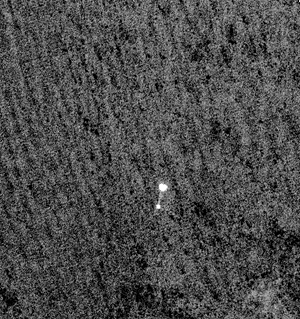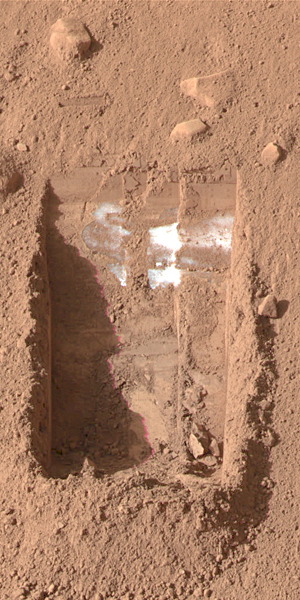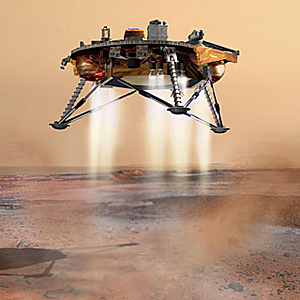


- Rozovsky wins prestigious NSF Early Career Award
- UD students meet alumni, experience 'closing bell' at NYSE
- Newark Police seek assistance in identifying suspects in robbery
- Rivlin says bipartisan budget action, stronger budget rules key to reversing debt
- Stink bugs shouldn't pose problem until late summer
- Gao to honor Placido Domingo in Washington performance
- Adopt-A-Highway project keeps Lewes road clean
- WVUD's Radiothon fundraiser runs April 1-10
- W.D. Snodgrass Symposium to honor Pulitzer winner
- New guide helps cancer patients manage symptoms
- UD in the News, March 25, 2011
- For the Record, March 25, 2011
- Public opinion expert discusses world views of U.S. in Global Agenda series
- Congressional delegation, dean laud Center for Community Research and Service program
- Center for Political Communication sets symposium on politics, entertainment
- Students work to raise funds, awareness of domestic violence
- Equestrian team wins regional championship in Western riding
- Markell, Harker stress importance of agriculture to Delaware's economy
- Carol A. Ammon MBA Case Competition winners announced
- Prof presents blood-clotting studies at Gordon Research Conference
- Sexual Assault Awareness Month events, programs announced
- Stay connected with Sea Grant, CEOE e-newsletter
- A message to UD regarding the tragedy in Japan
- More News >>
- March 31-May 14: REP stages Neil Simon's 'The Good Doctor'
- April 2: Newark plans annual 'wine and dine'
- April 5: Expert perspective on U.S. health care
- April 5: Comedian Ace Guillen to visit Scrounge
- April 6, May 4: School of Nursing sponsors research lecture series
- April 6-May 4: Confucius Institute presents Chinese Film Series on Wednesdays
- April 6: IPCC's Pachauri to discuss sustainable development in DENIN Dialogue Series
- April 7: 'WVUDstock' radiothon concert announced
- April 8: English Language Institute presents 'Arts in Translation'
- April 9: Green and Healthy Living Expo planned at The Bob
- April 9: Center for Political Communication to host Onion editor
- April 10: Alumni Easter Egg-stravaganza planned
- April 11: CDS session to focus on visual assistive technologies
- April 12: T.J. Stiles to speak at UDLA annual dinner
- April 15, 16: Annual UD push lawnmower tune-up scheduled
- April 15, 16: Master Players series presents iMusic 4, China Magpie
- April 15, 16: Delaware Symphony, UD chorus to perform Mahler work
- April 18: Former NFL Coach Bill Cowher featured in UD Speaks
- April 21-24: Sesame Street Live brings Elmo and friends to The Bob
- April 30: Save the date for Ag Day 2011 at UD
- April 30: Symposium to consider 'Frontiers at the Chemistry-Biology Interface'
- April 30-May 1: Relay for Life set at Delaware Field House
- May 4: Delaware Membrane Protein Symposium announced
- May 5: Northwestern University's Leon Keer to deliver Kerr lecture
- May 7: Women's volleyball team to host second annual Spring Fling
- Through May 3: SPPA announces speakers for 10th annual lecture series
- Through May 4: Global Agenda sees U.S. through others' eyes; World Bank president to speak
- Through May 4: 'Research on Race, Ethnicity, Culture' topic of series
- Through May 9: Black American Studies announces lecture series
- Through May 11: 'Challenges in Jewish Culture' lecture series announced
- Through May 11: Area Studies research featured in speaker series
- Through June 5: 'Andy Warhol: Behind the Camera' on view in Old College Gallery
- Through July 15: 'Bodyscapes' on view at Mechanical Hall Gallery
- More What's Happening >>
- UD calendar >>
- Middle States evaluation team on campus April 5
- Phipps named HR Liaison of the Quarter
- Senior wins iPad for participating in assessment study
- April 19: Procurement Services schedules information sessions
- UD Bookstore announces spring break hours
- HealthyU Wellness Program encourages employees to 'Step into Spring'
- April 8-29: Faculty roundtable series considers student engagement
- GRE is changing; learn more at April 15 info session
- April 30: UD Evening with Blue Rocks set for employees
- Morris Library to be open 24/7 during final exams
- More Campus FYI >>
10:44 a.m., April 9, 2009----Peter Smith, senior research scientist at the University of Arizona and principal investigator of NASA's Phoenix Mars Mission, will highlight the novel spacecraft's discoveries in the “The Journey of the Phoenix,” a public lecture on Thursday, April 16, at 7:30 p.m. at the University of Delaware's Roselle Center for the Arts.
Register for the free event at this Web page.
The ceremony will be Webcast live at this site and made available after the event on the UD podcast Web site.
The lecture also will be simulcast into the University of Delaware's virtual world in Second Life, at this location. You must have an avatar in Second Life to visit using this link.
The Phoenix Mars Lander, the first in NASA's Scout class, was launched August 4, 2007, and touched down in the Martian Arctic on May 25, 2008, to search the soil of the Red Planet for the building blocks of life.
During five months of operations, the probe confirmed the presence of frozen water just below the planet's surface, found minerals that form in liquid water, identified potential nutrients in the soil, and observed snow in the atmosphere. Phoenix's cameras captured more than 25,000 pictures, from grand landscapes to nanoscale images using the first atomic force microscope ever used outside Earth.
Throughout the mission, which ended in November 2008, Smith and his team controlled the lander from the University of Arizona's Science Operations Center, working closely with NASA's Jet Propulsion Laboratory in Pasadena, Calif., and Lockheed Martin Space Systems in Denver. An international assembly of scientific institutes in Canada, Denmark, Finland, Germany, and Switzerland also was involved.
Smith holds a bachelor's degree in physics from the University of California Berkeley and a master's degree from the University of Arizona Optical Sciences Center. He will receive his Ph.D. in optical sciences from the University of Arizona next month. He has worked at the university's Lunar and Planetary Laboratory since 1978. In 2008, he was named UA's first Thomas R. Brown Distinguished Chair in Integrative Science.
Smith has participated in many of the seminal space missions that have explored the solar system. His association with the Red Planet started in 1993 after his camera proposal was accepted by NASA for the Mars Pathfinder mission. As the first lander to reach Mars since 1976, there was tremendous public interest as the camera returned the first images from the Martian surface on July 4, 1997.
In fall 2003, Smith's Phoenix project was selected as the first Scout mission to Mars after a competitive NASA selection process. Valued at more than $420 million, the spacecraft was named after the mythological bird that rises from the ashes of its predecessor. It made use of the mothballed 2001 lander with instruments delivered for both that mission and the failed Polar Lander mission.
Smith will receive the American Geographical Society's prestigious Cullum Geographical Medal on Wednesday, April 15, at the Center for the Arts.
Together, the award ceremony and public lecture mark the culmination of the University of Delaware's William S. Carlson International Polar Year Events.
Presented in cooperation with the American Geographical Society of New York City, the series of public lectures, seminars, receptions, exhibitions, and films celebrated William S. Carlson, UD's president from 1946-1950, who was an Arctic explorer, and the University's significant polar research in the world's fourth International Polar Year, which began in March 2007 and concluded in April 2009.
Campus sponsors included the Office of the Provost, Center for International Studies, Research Office, Office of Graduate and Professional Education, Office of Communications & Marketing, the UD Library, and UD's seven colleges -- Agriculture and Natural Resources; Arts and Sciences; Lerner College of Business and Economics; Engineering; Health Sciences; Human Services, Education and Public Policy; and Marine and Earth Studies.
The steering committee for the series was co-chaired by Frederick Nelson, professor of geography, and Lesa Griffiths, associate provost of international studies.
Article by Tracey Bryant



